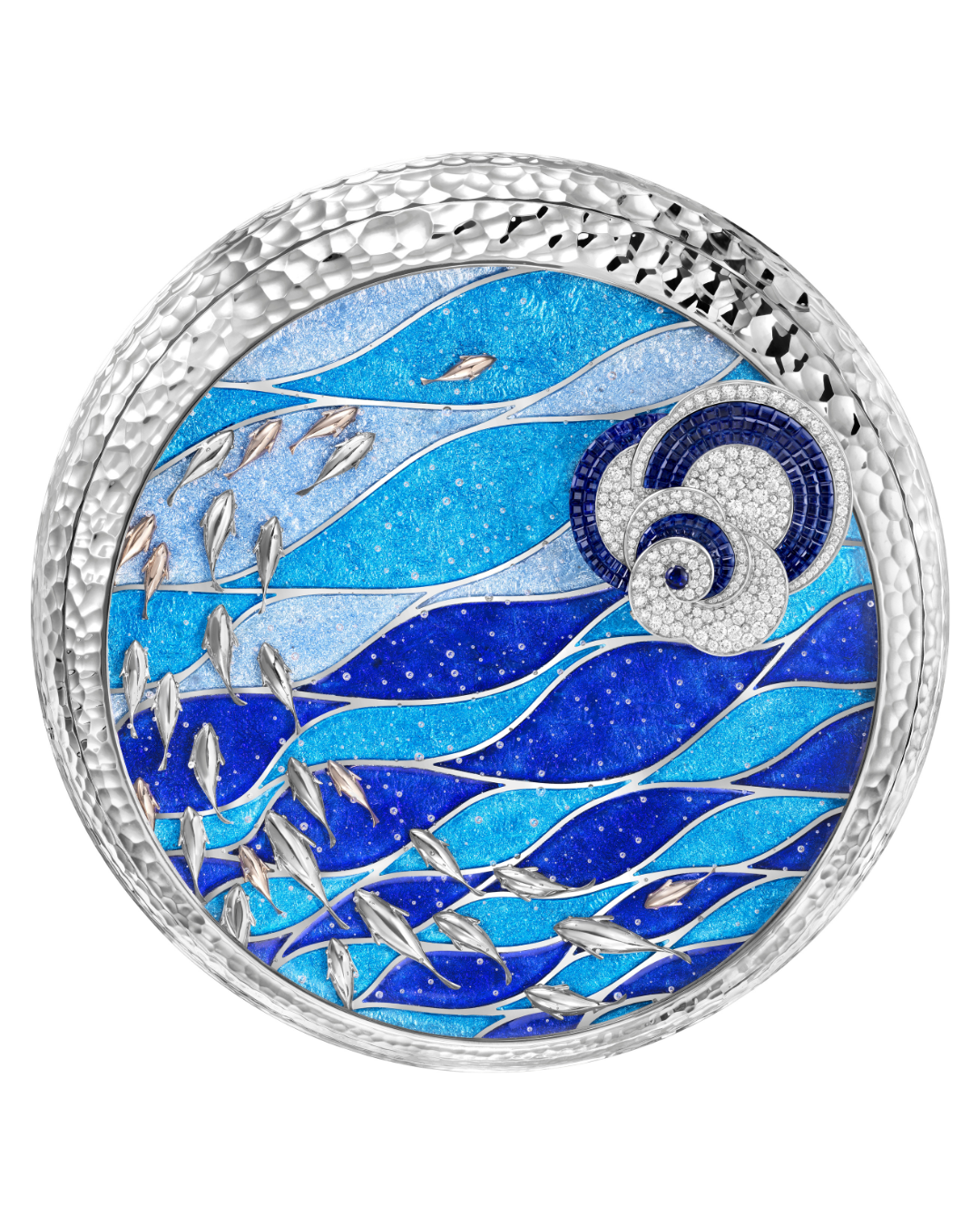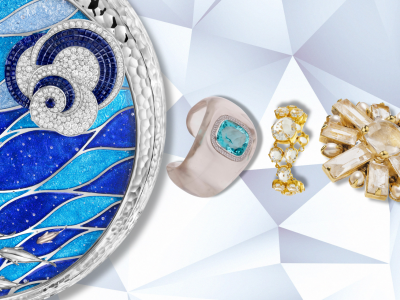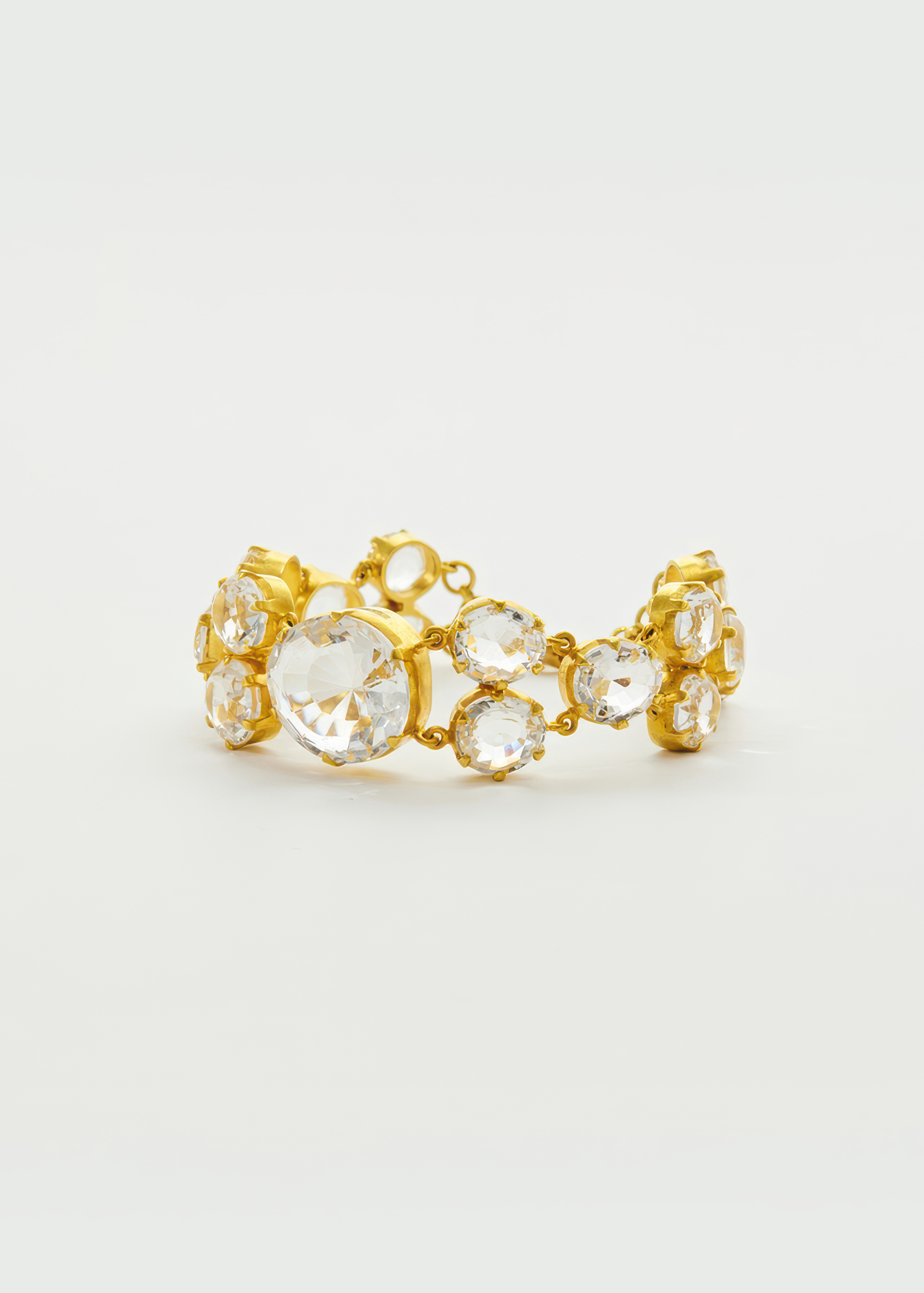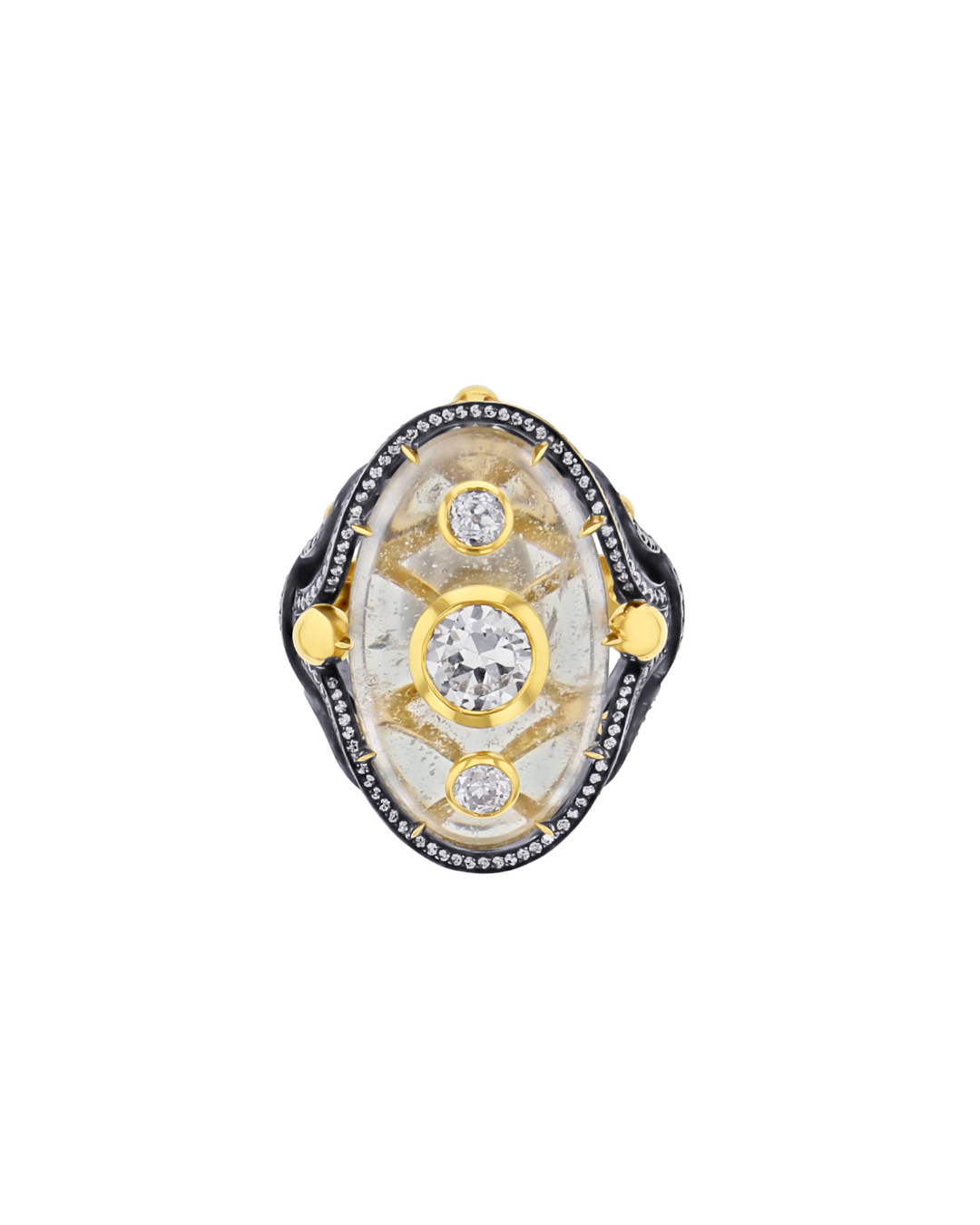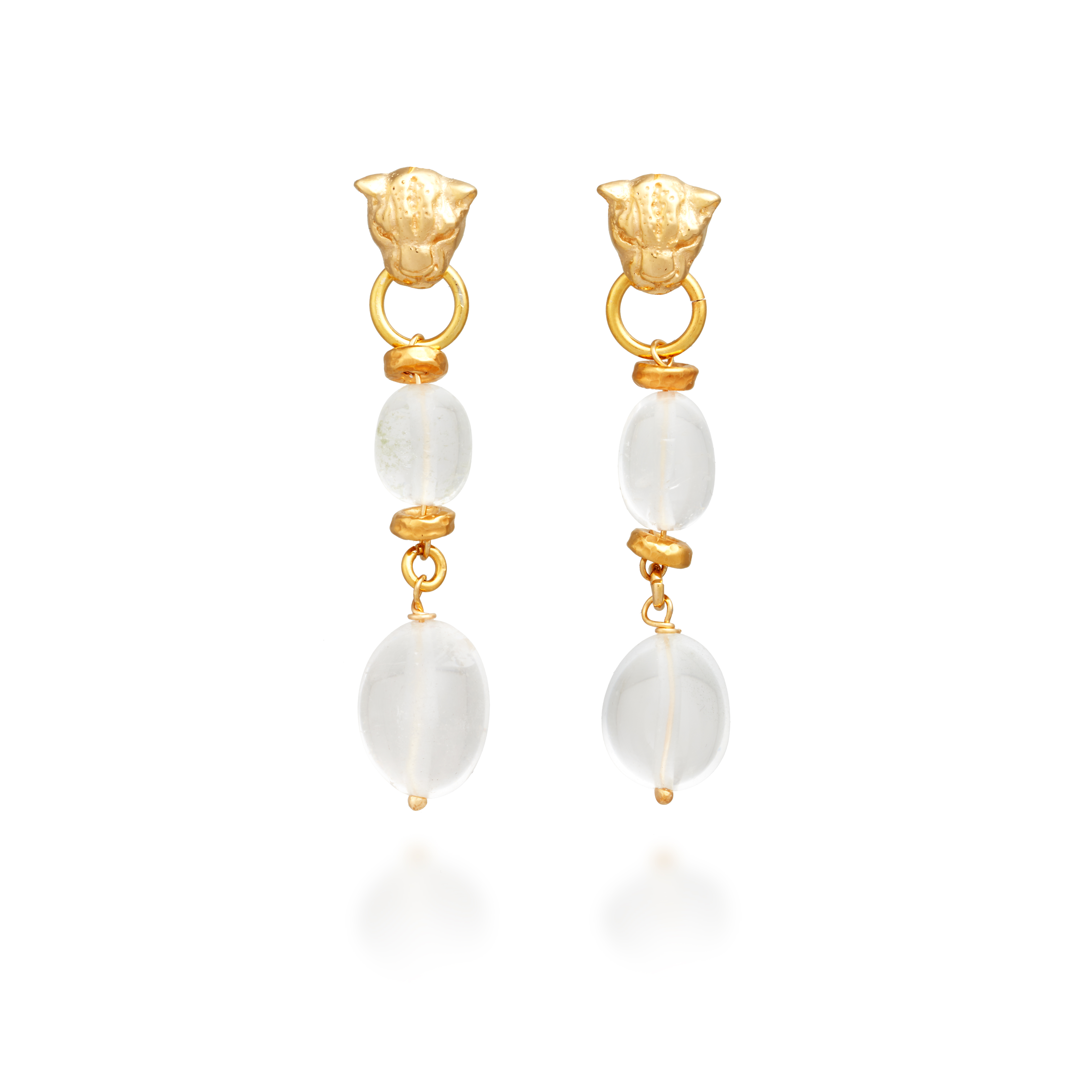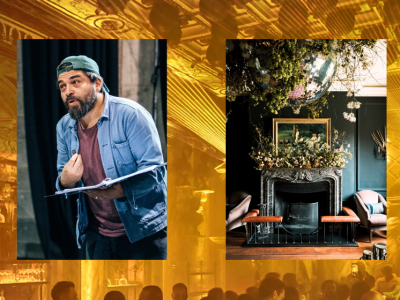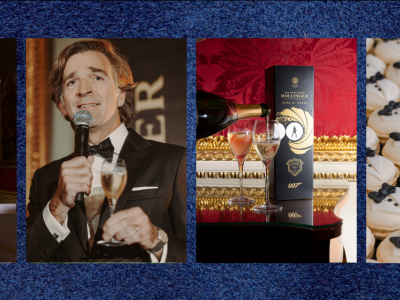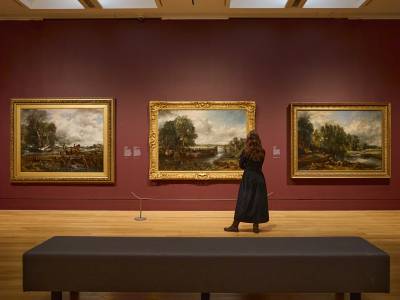Rock crystal is the jewellery designer’s reliable and unassuming ally. Reasonably priced and far from rare, the purest form of quartz is literally crystal clear and hard enough to be durable yet can also be faceted or carved; when it refracts light brilliantly, as today’s designers are rediscovering. It’s a perfect foil for all the coloured stones used currently, the ultimate punctuation point when things get florid, more interesting than a length of fine chain and demonstrating good sense of design.
How Rock Crystal Jewellery Became a Luxury Staple
28th August 2025
Not all gemstones need to be centre stage. Avril Groom sings the praises of rock crystal jewellery, the best supporting act in design.
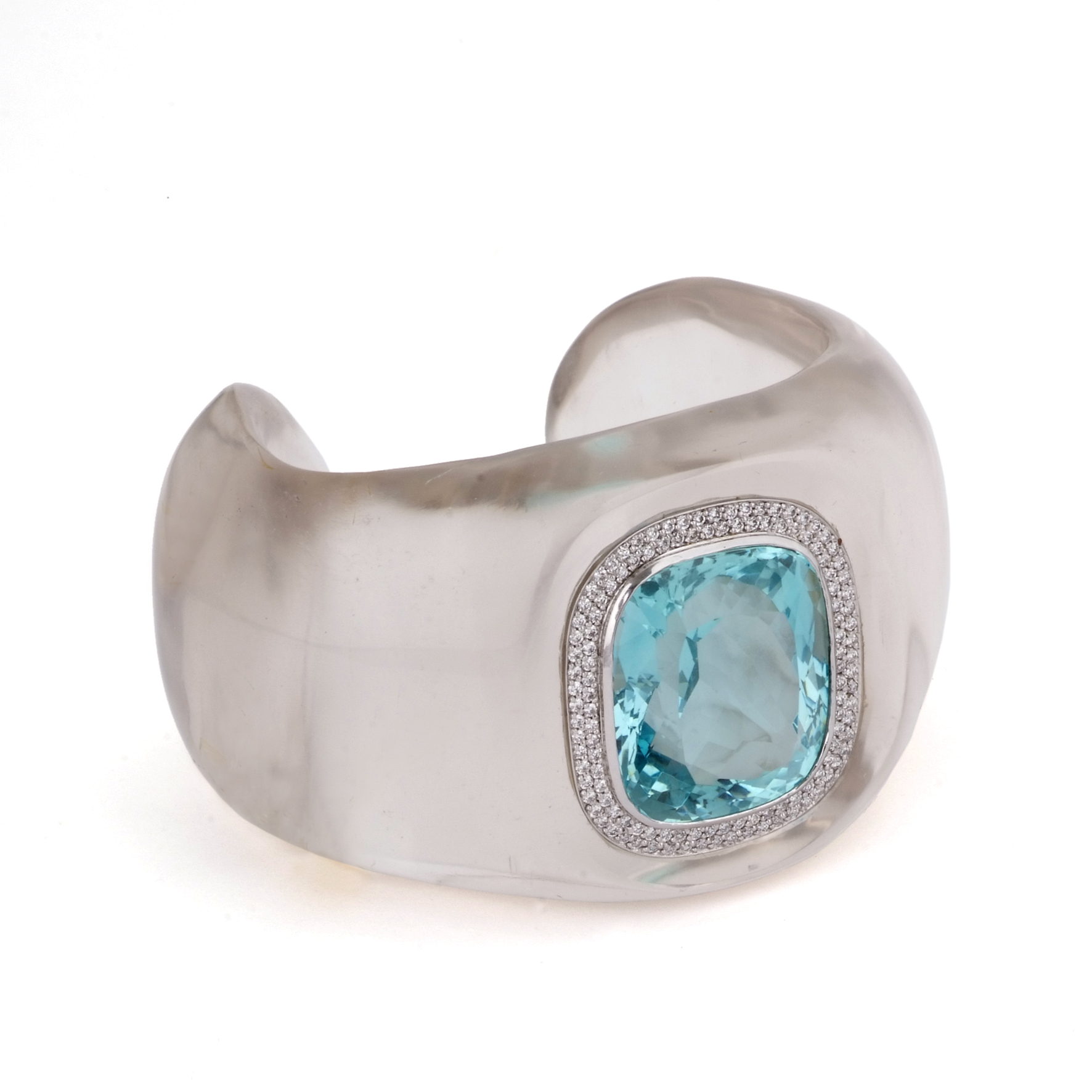
It is not just the designer who benefits from rock crystal’s subtle charms. British designer Bear Brooksbank, who has used it for several bespoke pieces, says, “It’s one of my favourite materials — neutral but the best type of friend to any stone, providing a frame, backdrop, body or accent to bold colours without scene stealing. I’m also obsessed with monochrome, and to me, the classic Art Deco mix of rock crystal with diamonds and onyx is the sexiest combo ever.” Her bespoke transformable necklace/bracelet with a detachable pendant featuring a hidden Morse Code message, as well as her crystal cuff sporting a large, bright aquamarine, illustrate the contrast.
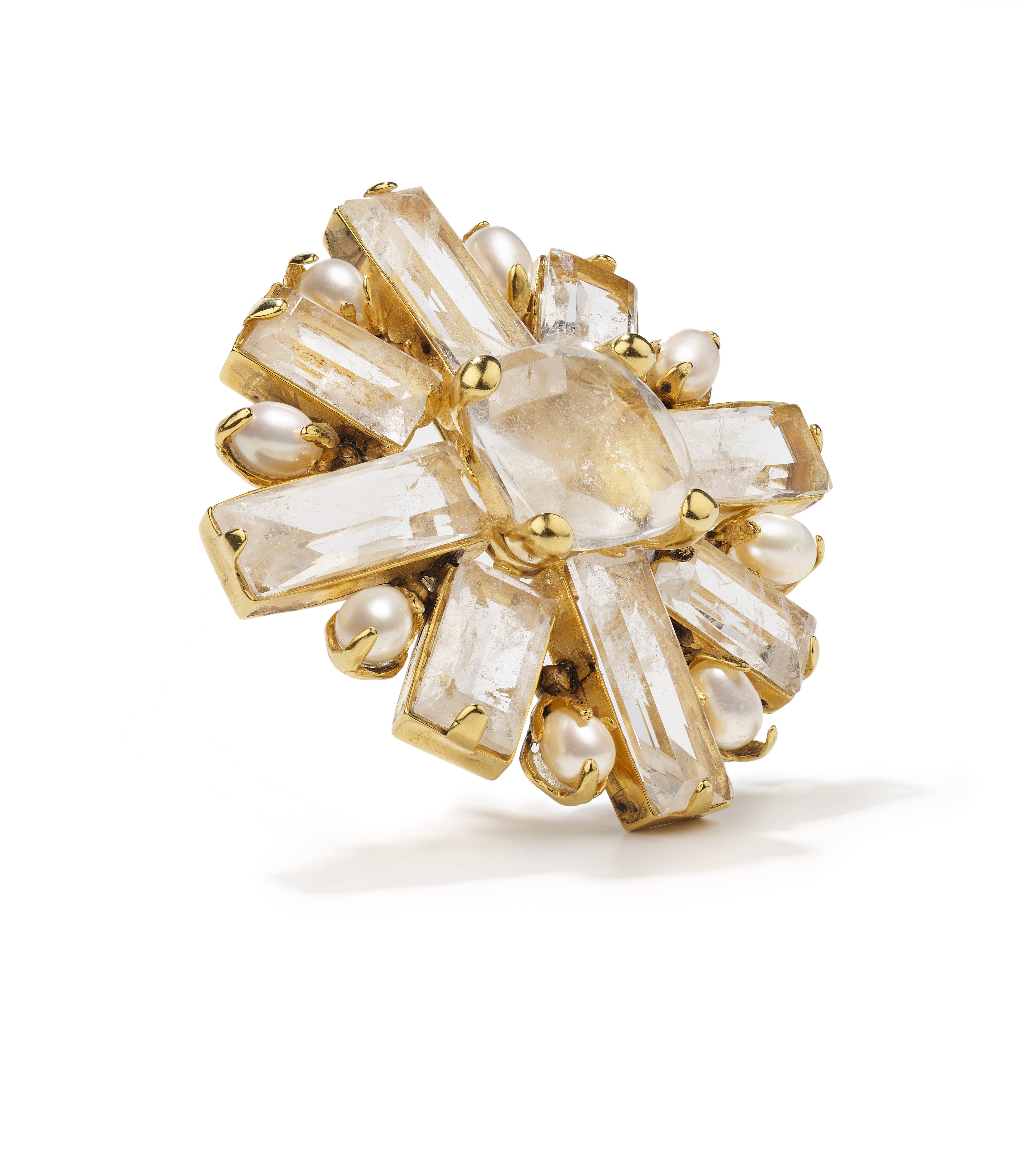
Its history goes back much further than the 1920s. It was used for jewellery and precious objects in ancient Egypt, Mycenae and Mesopotamia. By the Middle Ages, it was employed to house religious relics, visible to the faithful. A spiritual dimension emerged; the ancients thought it channelled spiritual energy while those in the Medieval period associated it with purity and wisdom, which finds echoes in healing crystals today.
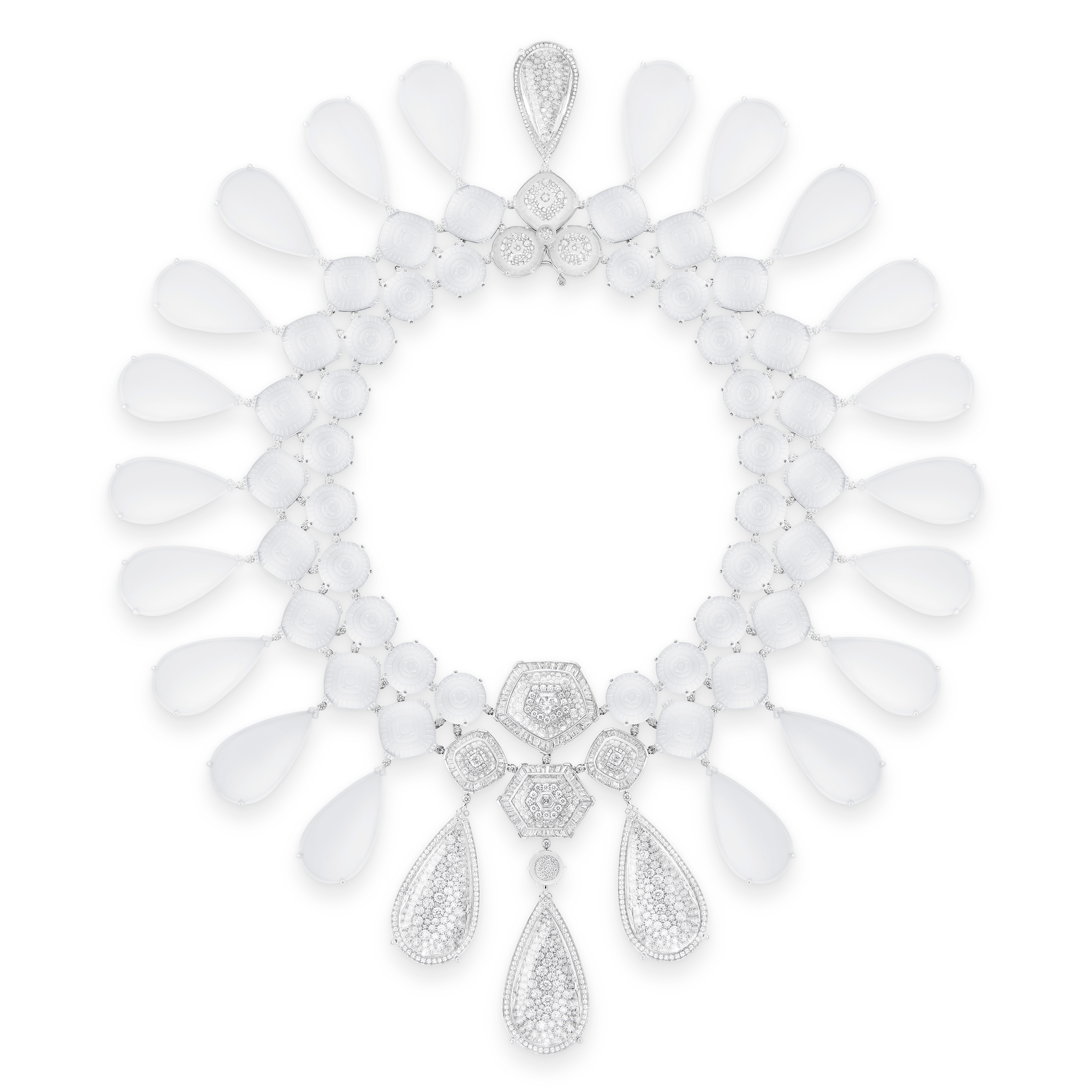
As society secularised and the influence of other cultures brought new styles and crafts, jewellers focused on it, and by the early 20th century, houses like Cartier, Van Cleef & Arpels and Boucheron were developing intricate designs that appealed to markets from American tycoons to Indian maharajas. Initially, this was seen in the delicate, curvilinear garland style and by the 1920s, it was evident in the more minimalist, geometric Art Deco, mixing crystal with classic coloured gems but, most of all, with diamonds.
Two pieces in the current Cartier exhibition at the V&A crystallise that change — a 1913 platinum and diamond stomacher brooch, with the rock crystal bow and drop carved with extraordinary finesse, and a pair of 1930 cuffs, owned by Gloria Swanson and created for flexibility from slender half-circles of crystal defined by diamonds. Art Deco style has become a defining influence, but change came when Claire Choisne, an outrageously talented designer, arrived at Boucheron in 2011. She cites rock crystal as one of her favourite stones and, inspired by the house archives but adding new twists, has frosted it, planed it to watch-glass thinness and inlaid it with diamonds or sapphires. Her most recent Carte Blanche high jewellery collection is inspired by Iceland’s barren land and seascapes, with crystal carved into concentric, diamond-scattered circles resembling expanding ripples from raindrops on a calm lake, or frosted, or left clear but backed with diamond pavé, like snow crystals glinting on a glacier’s milky ice.
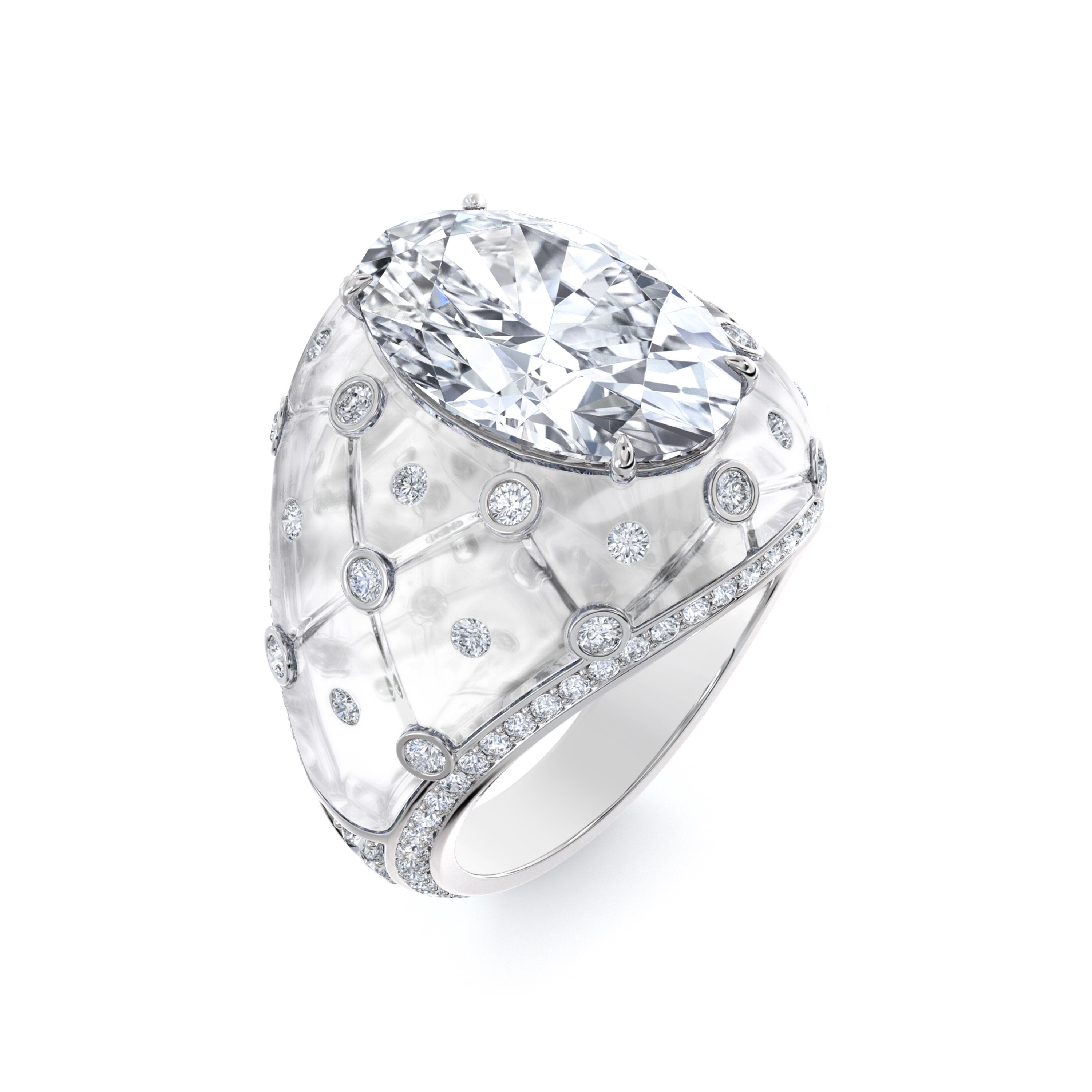
Meanwhile, Chanel harks back directly to Art Deco with the very grand Lion of Mademoiselle, a splendid pendant timepiece where a beautifully carved gold and diamond lion stands on a black enamel plinth with a tiny, diamond-shaped watch and underneath a semi-circle of rock crystal perfectly carved and engraved. Elsewhere, De Beers’ Frozen Capture pieces are both Art Deco and modern, bearing geometric squares and lattices of crystal scattered with tiny diamonds.
Others have opened their eyes to rock crystal’s beauty and refractive qualities. Brussels-based Boghossian created an astonishing masterwork collection, Palace Voyages, last year, based on the architecture of 14 of the world’s great palaces, from Beijing to Brighton. The mirrors and ceilings of Tehran’s Golestan Palace are reflected in rock crystal carved from behind in a lattice pattern and surrounded by mother-of-pearl strapwork and diamonds. Also reflecting mirrors, lit by candles, is Parisian star Elie Top’s Les Liaisons Dangereuses collection, inspired by intriguefuelled 18th-century salons. A ring with a large crystal cabochon is inlaid with diamonds and backed with polished gold, which reflects a soft glow, while a rock crystal drop with a diamond at its heart and gold at its back is suspended from curlicues of blackened silver picked out in diamonds, on a golden torque — a love token out of a French myth.
While these pieces highlight classical techniques, other designers are giving crystal star billing in contemporary designs. With its 1960s heritage, Pomellato now adds milky crystal to the stone varieties in its Nudo collection, cut deep and mounted on rose gold as pendants and two-ended bangles. More accessibly, Italian designer Giovanni Raspini, known for combining silver with natural stones, gilds Roman-looking leopard heads for long earrings with natural, double rock crystal drops.
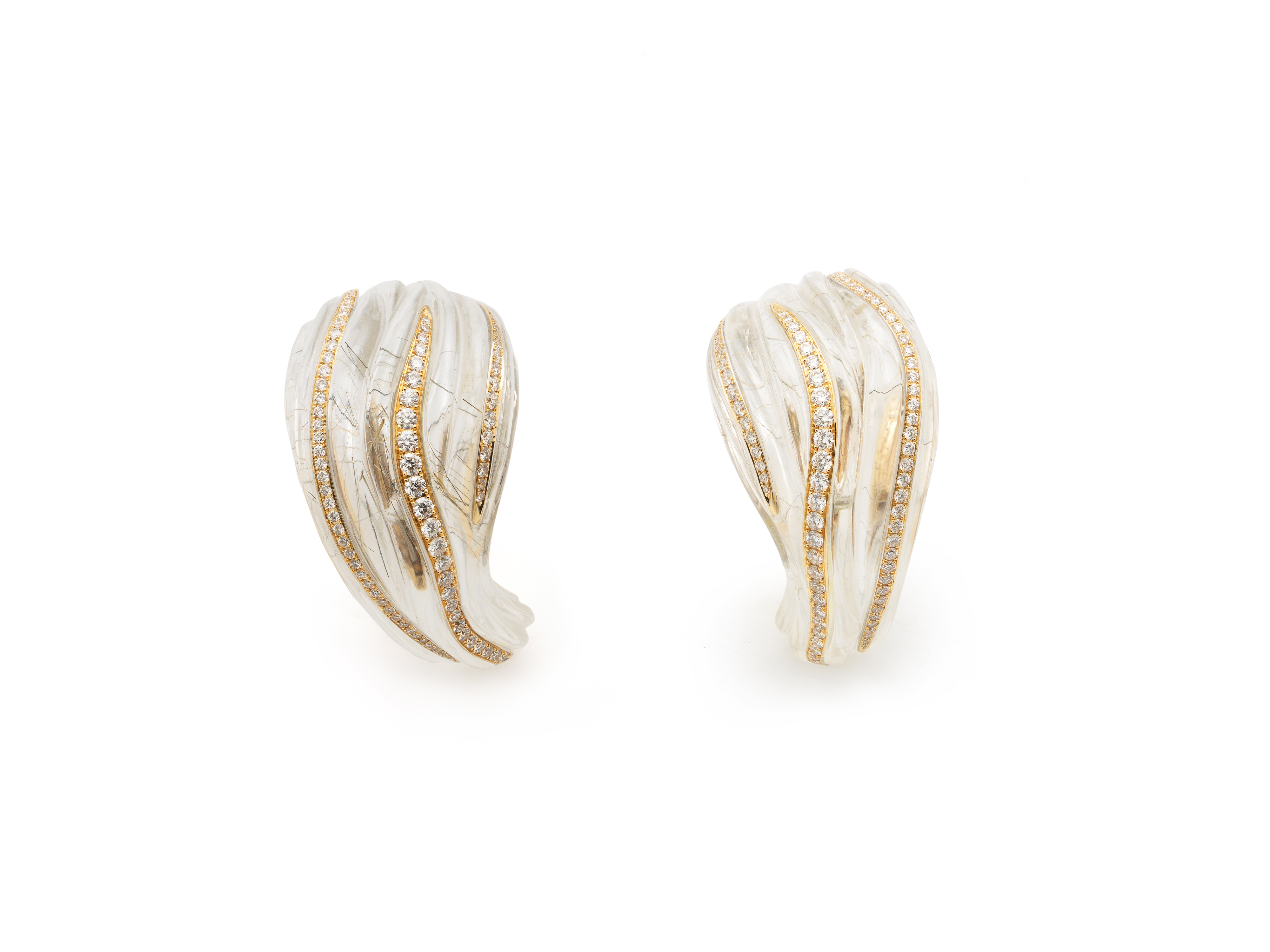
Dutch designer Bibi van der Velden’s Tidal Wave earrings are subtly modern, featuring carved, abstract swirls of rock crystal graced with wavering diamond lines in yellow gold. Another surprise: at the crystal’s heart are tiny black threads as fine as angel’s hair — natural inclusions that some spurn but van der Velden adores. “In the modern artistry realm, rock crystal reigns supreme; its timeless elegance embodies the eternal allure of nature’s finest treasures,” she says. “It’s popular again because true beauty transcends the ages.”
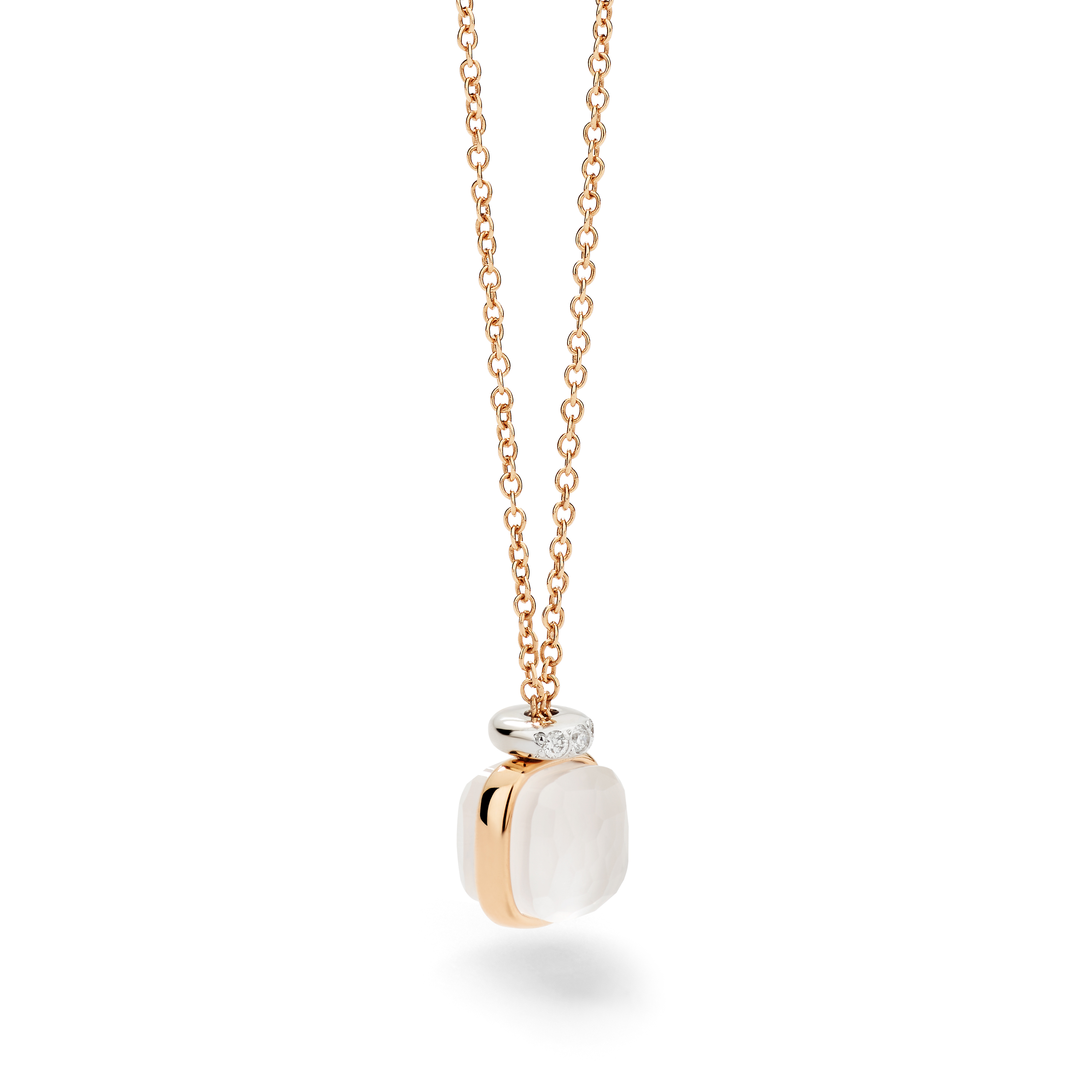
She is not alone. Pomellato uses rutilated quartz — where the reflective threads are reddish gold — because, as their gem master Stefano Cortecci explains, “a gem’s greatest value lies not always in its flawlessness but in its distinctive character.” Fêted British designer Pippa Small uses it, alongside crystals with inclusions and Herkimer “diamonds” from New York State, which have diamond-like double pyramid ends and, she says, “extraordinary brilliance and lustre; no two are the same.” Chanel-owned Goossens’ bold vermeil pieces with natural stones use crystal plain or subtly dyed, revelling in inclusions for their character.
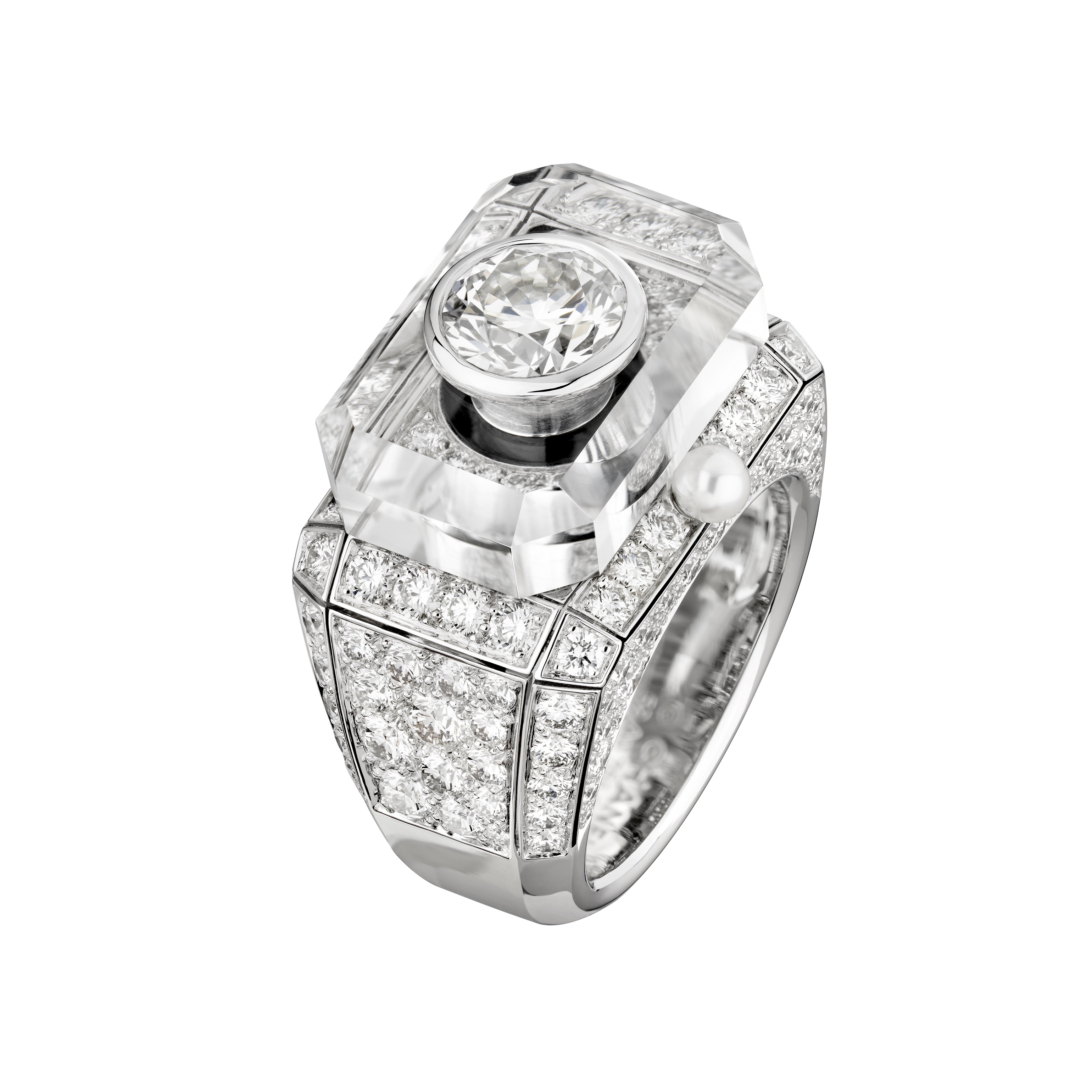
Grand Van Cleef &Arpels seeks out inclusions with special qualities. In their Treasure Island collection nature imitates, well, nature, in the Onde Mystérieuse box, adorned with diamonds, sapphires, tourmalines and enamel creating a seascape protected by polished sapphire crystal that contains tiny bubbles, that look as if they were released by the shoal of white and rose gold fish — a quirk of nature that bestows huge rarity value. Not quite what Small means when she says she loves rock crystal because “it’s beautiful yet humble, whether faceted or tumbled, a powerful talisman for millennia, yet still accessible,” but she’s right. As a unique collector’s piece or an affordable plated item, rock crystal has a place in every jewel box.
